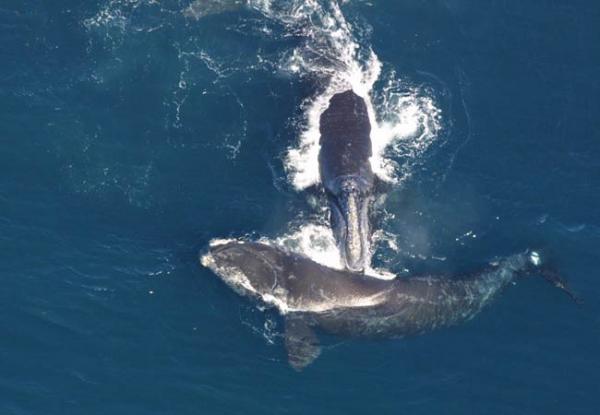
© NOAANorth Atlantic right whales.
A record number of critically endangered right whales are crowding the chilly waters off Cape Cod, Mass.
Researchers counted more than 100, and possibly as many as 200, animals during aerial surveys on Tuesday, the
Boston Globe reported, a number that could represent nearly half the entire known right whale population that remains on Earth. Right whales, one of the rarest kinds of baleen whales, are teetering on the brink of extinction. Only about 450 to 500 North Atlantic right whales are thought to remain on the planet.
Charles "Stormy" Mayo, senior scientist at the Center for Coastal Studies in Provincetown told the Globe the whales are as close as a few yards offshore to about a quarter-mile out, and said he expects the marine crowd to remain in the area for at least another week.
The right whales are gathered for a feeding frenzy on
zooplankton, tiny, rice-sized crustaceans the
baleen whales strain into their massive mouths.
Mayo said it's likely the record number of
whales showed up this year because the waters are particularly rich with plankton this year, in much the same way that, on land, some years are better for crops than others.